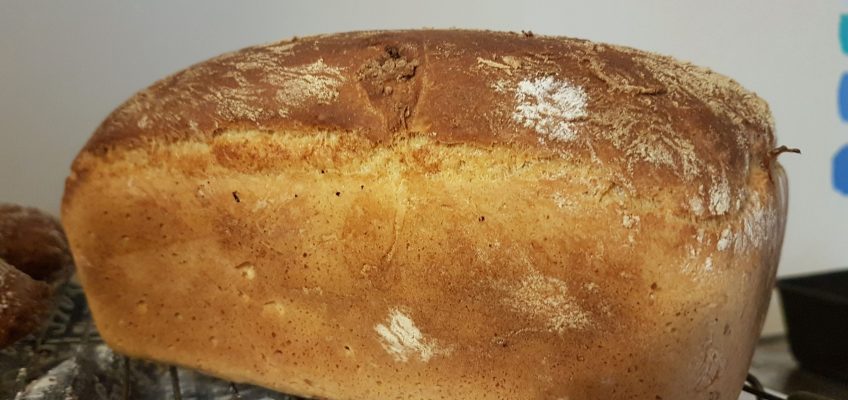To show that I’m not just a writer, I thought that it would be good to share some of the other things that I get up to. Plus a few tips and tricks to make your baking life easier. As well as one for using up old bread.
Once a week, I leave the writing for a few hours and bake bread. Sometimes I bake sourdough, that takes a bit of organisation as its a process that can span a couple of days. Some weeks, if I’m busier, I just bake a normal loaf.
The one thing I do every week is feed my sourdough starters. They’ve been with me for nearly seven years now and feel like part of the family.
It’s quite simple, there are four of them. They live in the fridge, weighing 150 g each, consisting of an equal mixture of flour and water. They are a home for wild yeast, which feeds on the flour, grows slowly and produces gas bubbles. Here’s a picture of Hortense, my white flour starter. I also keep spelt, wholemeal and rye starters, all derived from this one.
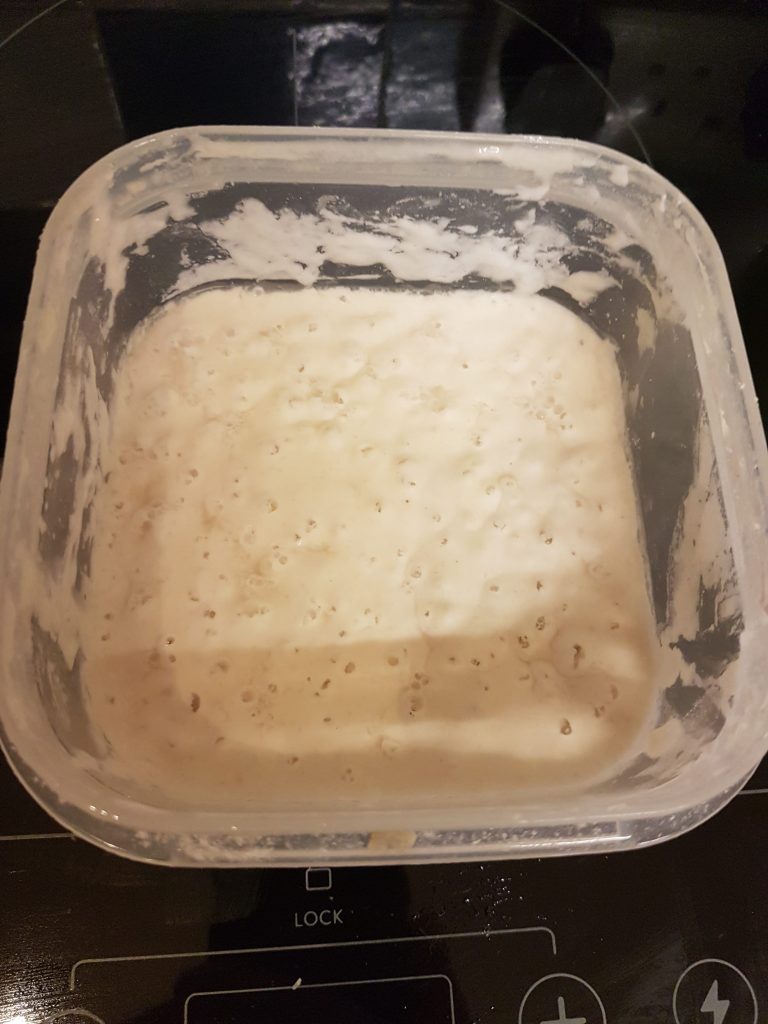
To refresh the starter, I take 100g of the mixture out, add 50g of flour and 50g of cool water, giving it a good stir. That will be enough to keep it going for another week.
The 100g of spent starter from each of the four starters is not wasted, far from it. A lot of people refer to it as discard, which annoys me. It might not be good enough to raise bread but it should NEVER be discarded.
I will use it in my next non-sourdough loaf. Even though it doesn’t provide any rise to the dough, it still imparts a little bit of flavour. Just put it in with the mixture and make the dough as normal. You can also use it for batter, Yorkshire puddings and onion rings spring to mind. It can also flavour biscuits, click here for a recipe.
If we haven’t finished last weeks loaf (the bread I make keeps for a week with no artificial additives), I cut up what’s left and make croutons, for soup or salad.
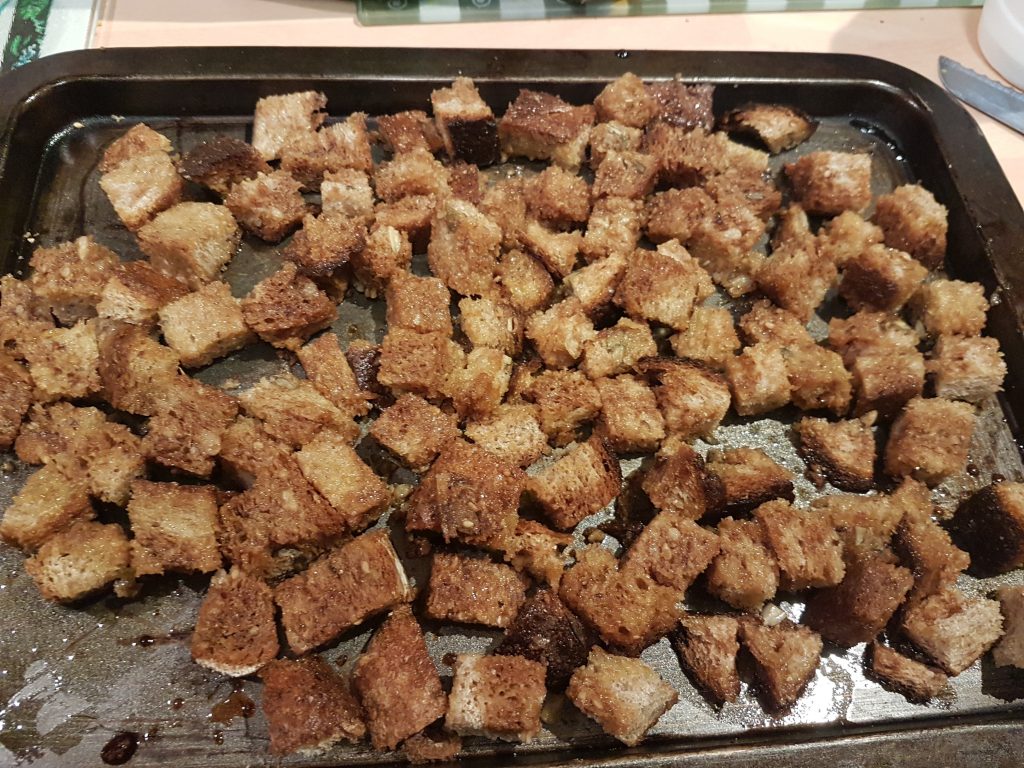
These chunks are splashed with Balsamic vinegar and Olive Oil (do the vinegar first as the oil stops it soaking into the bread), and baked at 160°C for about 30 minutes, until crisp. Cool and store in the fridge. Just throw a few onto a bowl of hot soup, or mix with salad leaves.
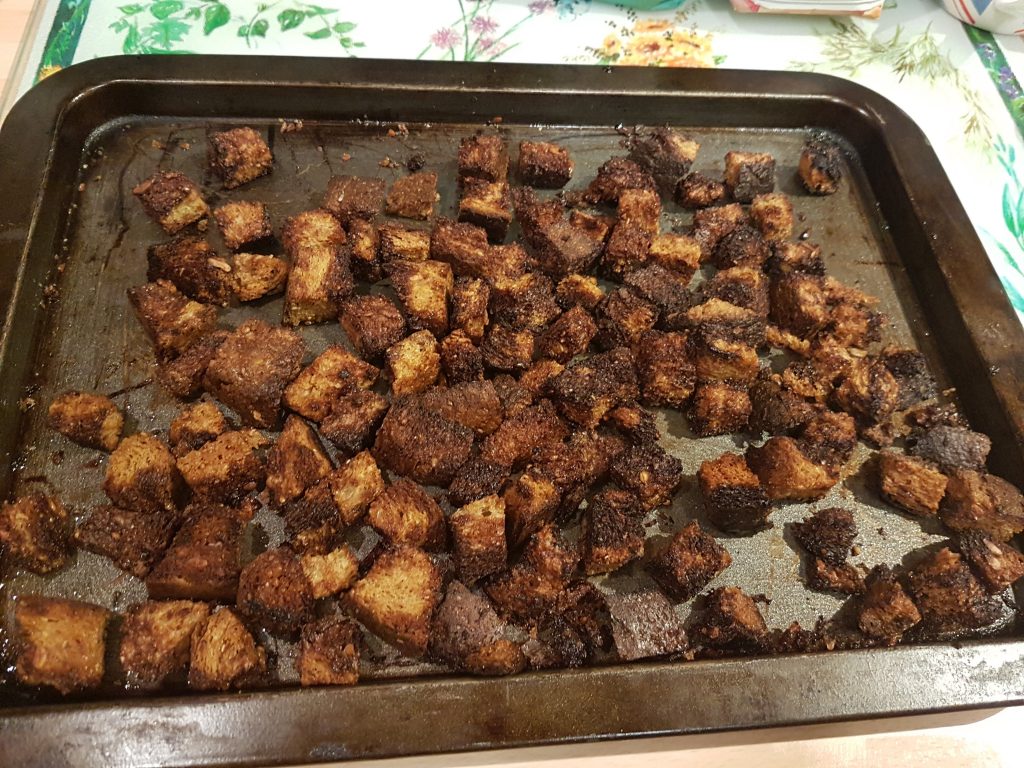
As well as plain loaves, I make flavoured rolls for lunch. Family favourites are cheese and onion or beetroot. today, I’m adding 500g of chopped cooked beetroot (and including the liquid from the pack) to a standard dough made with wholemeal flour and the rye sourdough starter.
When I say standard dough, these are the amounts of each ingredient,
before adding any sourdough starter
Flour 500g
Liquid 350g (I include 30g Olive Oil)
Yeast 10g
Salt 10g

The mixed dough is proved in my normal oven. I don’t have a specific proving oven but I’ve learned a trick to improvise one.
Basically, you fill a tray with boiling water, place it in the bottom of the oven, put the dough in and turn the oven onto MAXIMUM for ONE MINUTE ONLY. Turn it off and leave the door closed for one hour. Simple!!
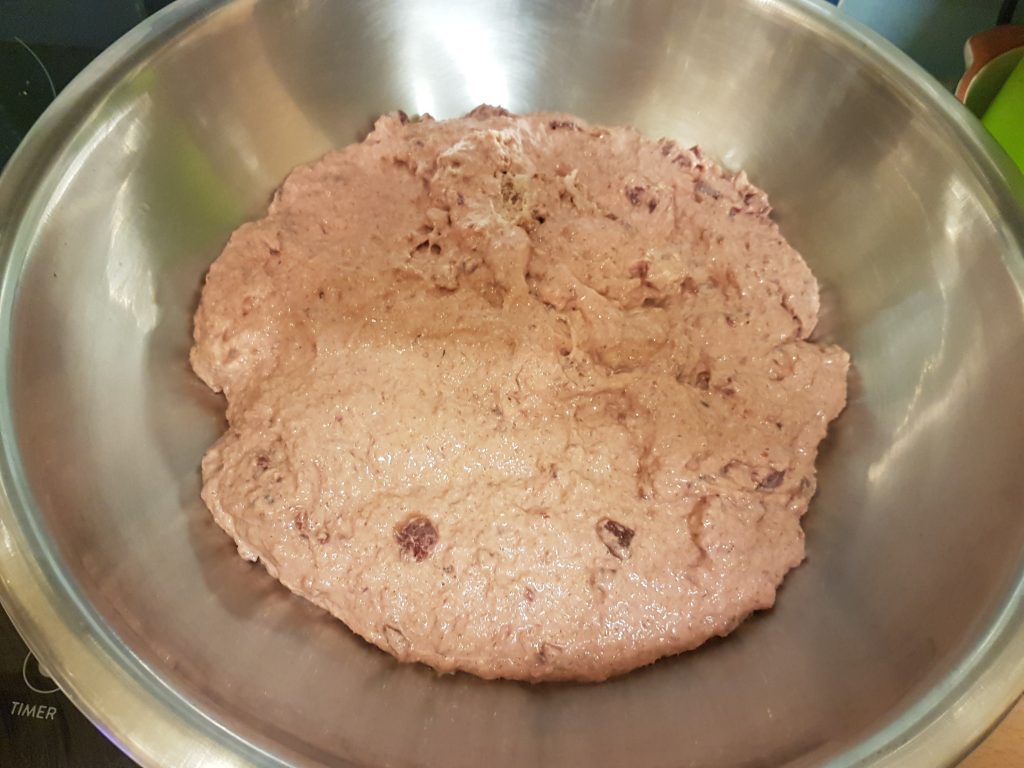
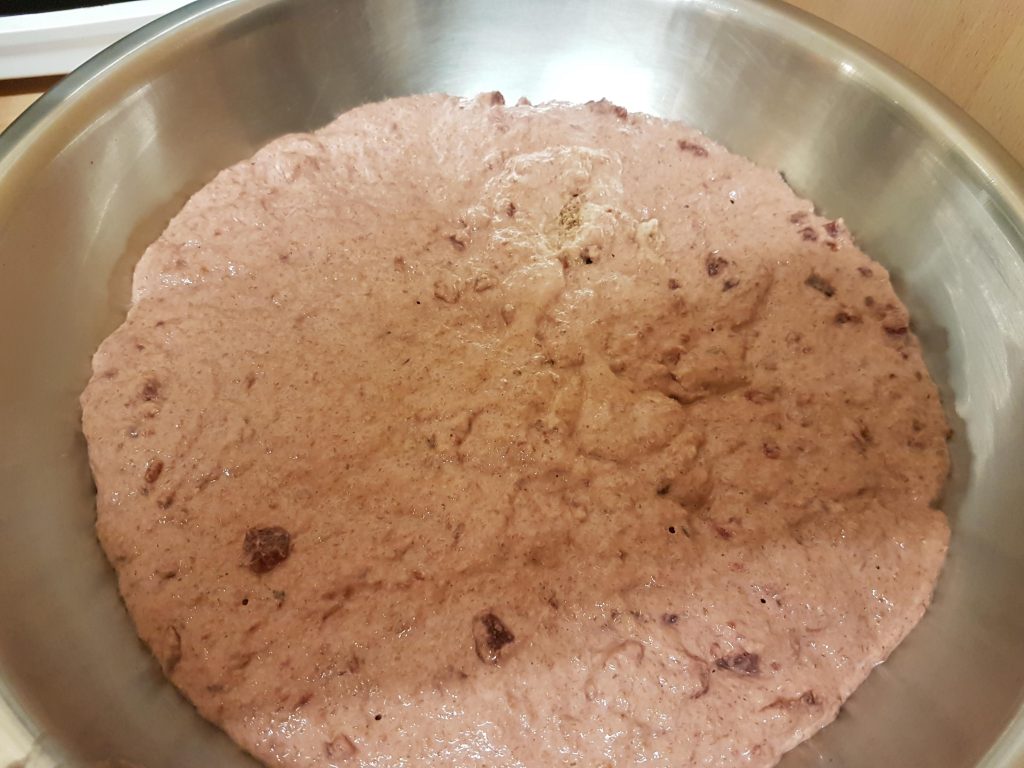
I have to shape ten rolls from this dough and leave them to prove again while my oven heats up.
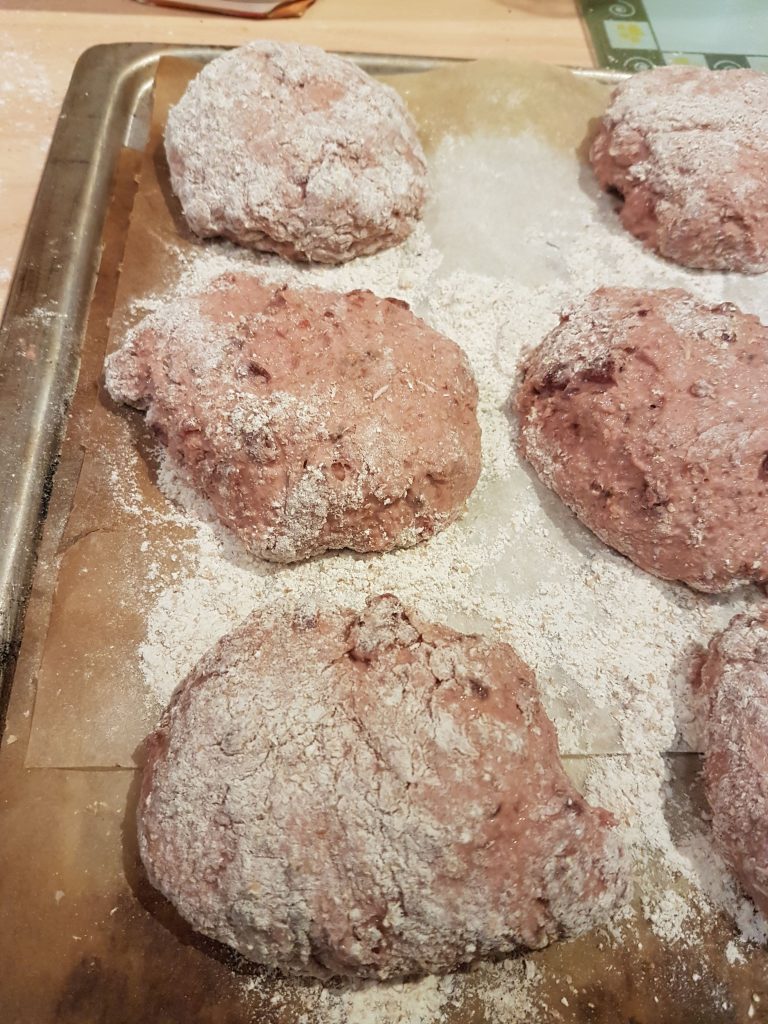
They bake at 240°C for 18 minutes. I use a thermometer to check that they’re done, the internal temperature should be over 95°C.
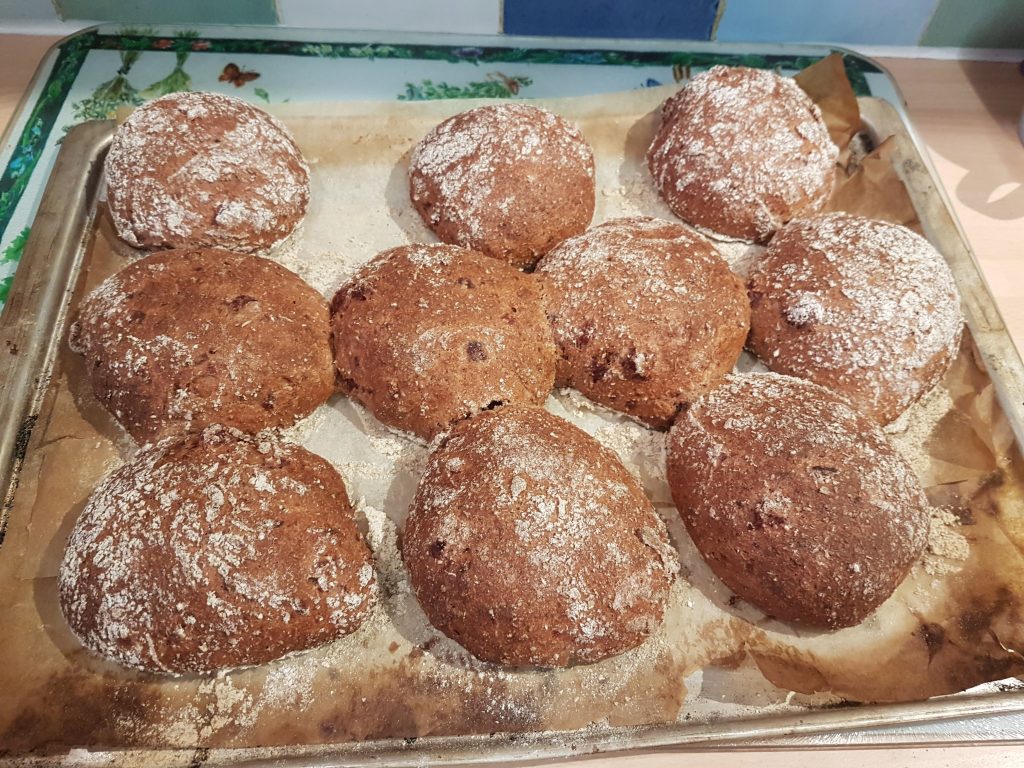
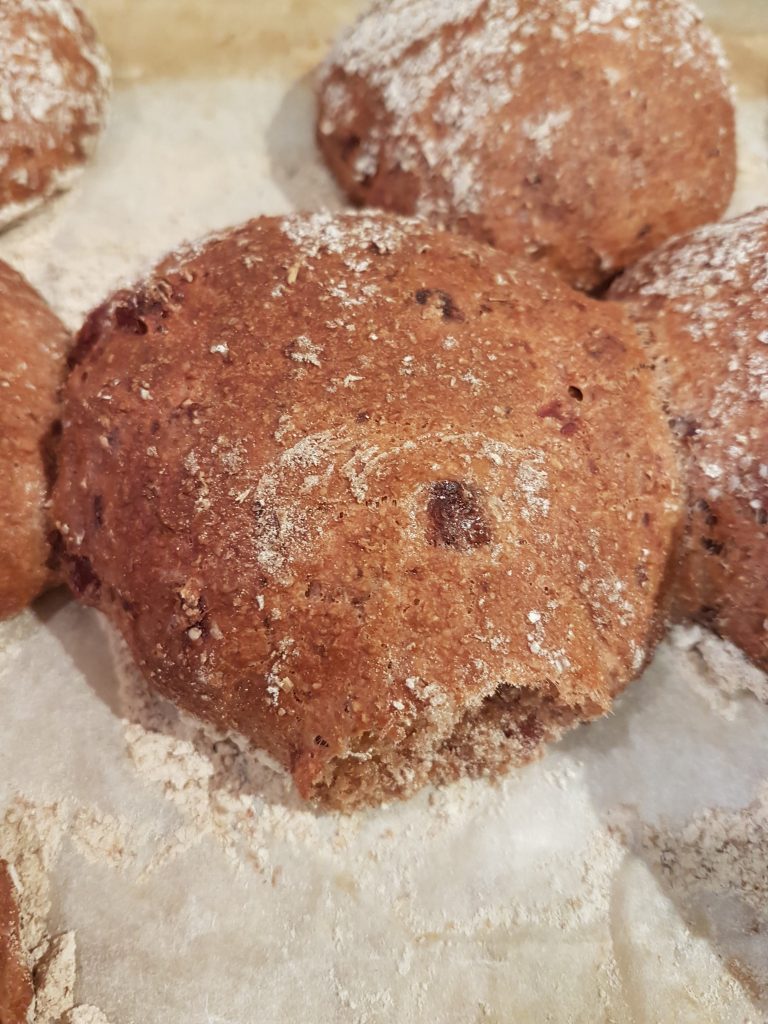
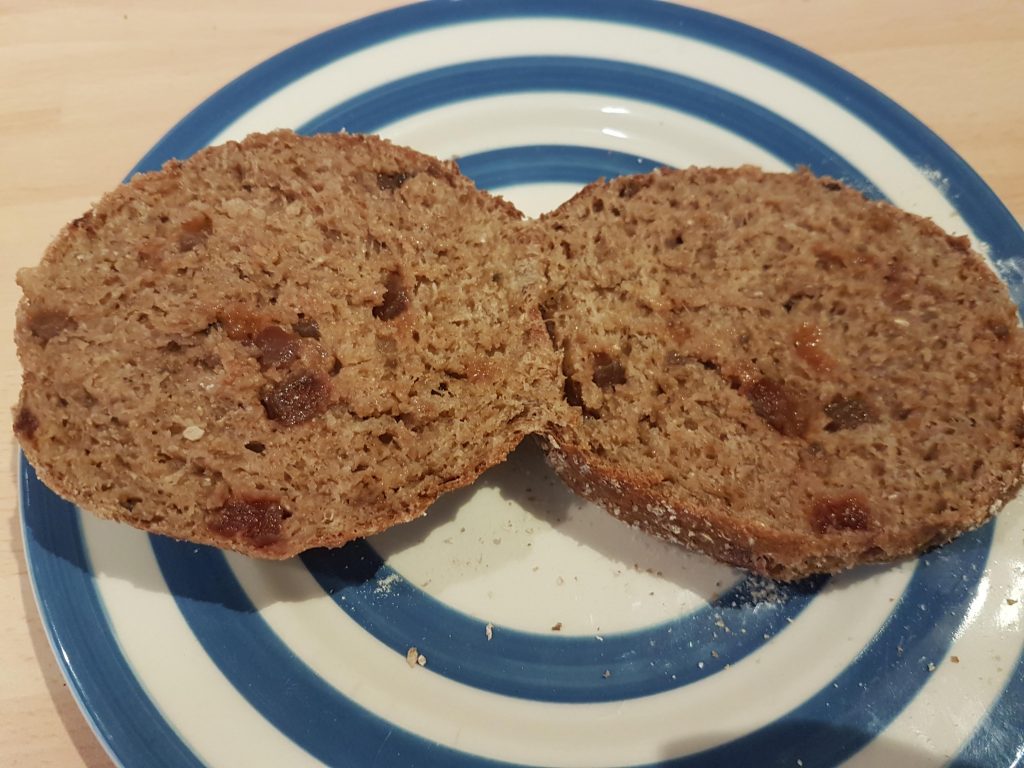
While that was going on, I also baked a standard white sandwich loaf, using white and spelt starters.
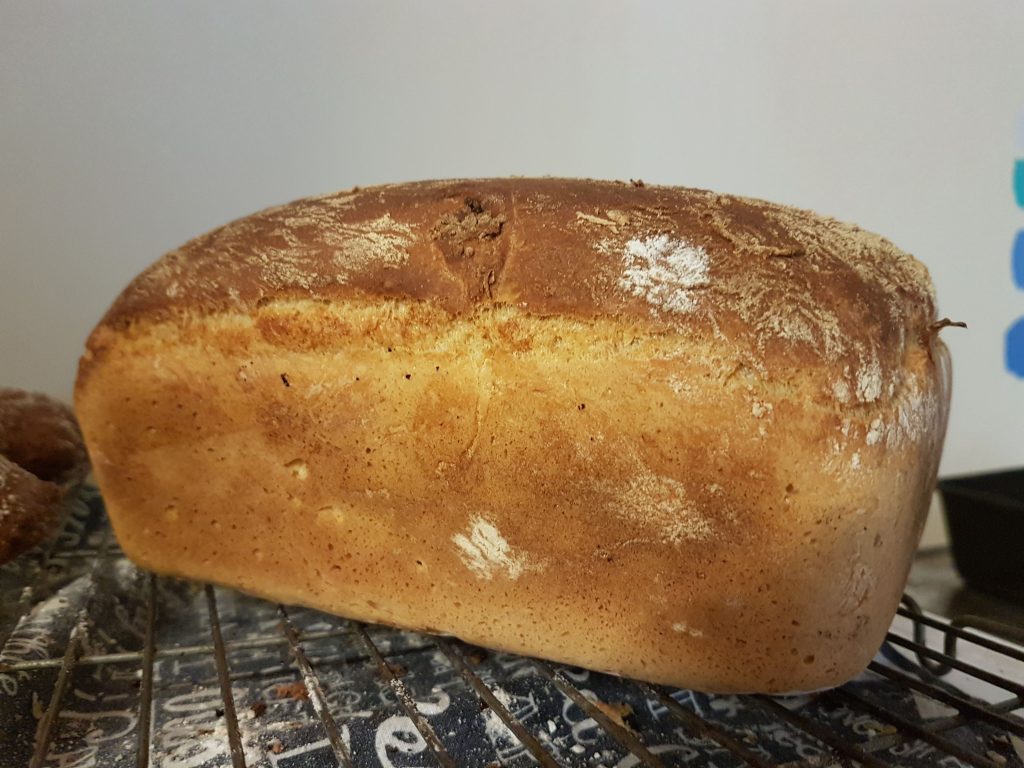
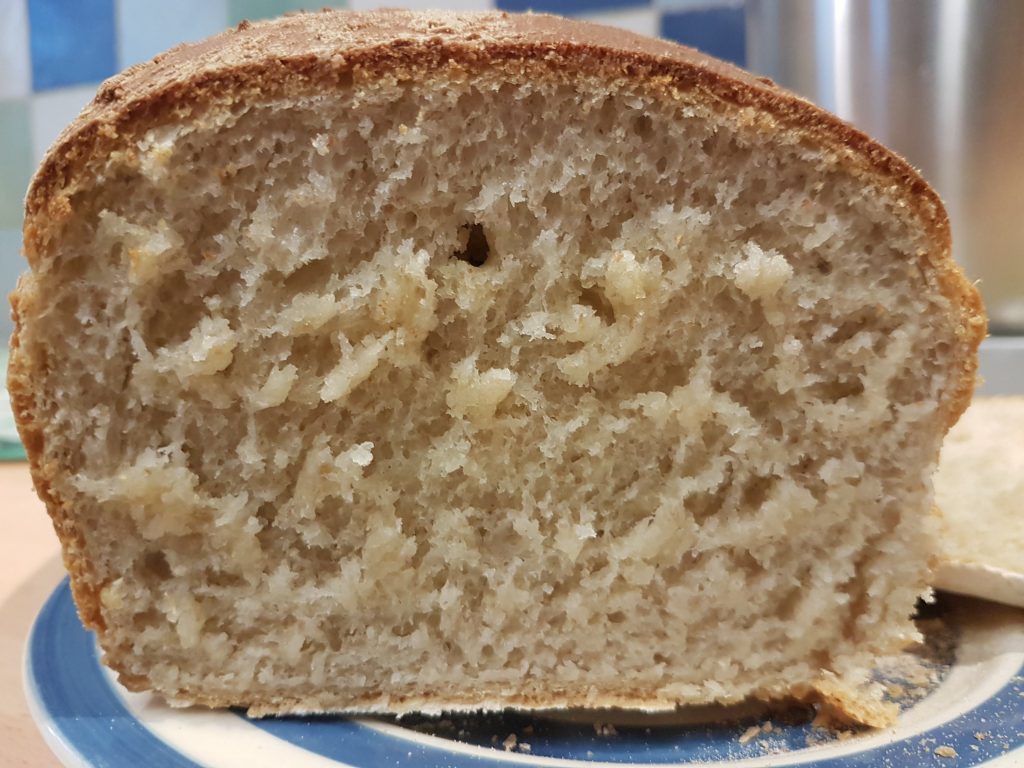
I hope that’s given you some ideas. If you want to know more about baking or sourdough, please comment below.
I’d love to get your comments, please leave them below. While you’re here, why not take a look around? There are some freebies and lots more content, about me, my writing and everything else that I do. You can join my newsletter for a free novella and more news by clicking this link.
![]()

